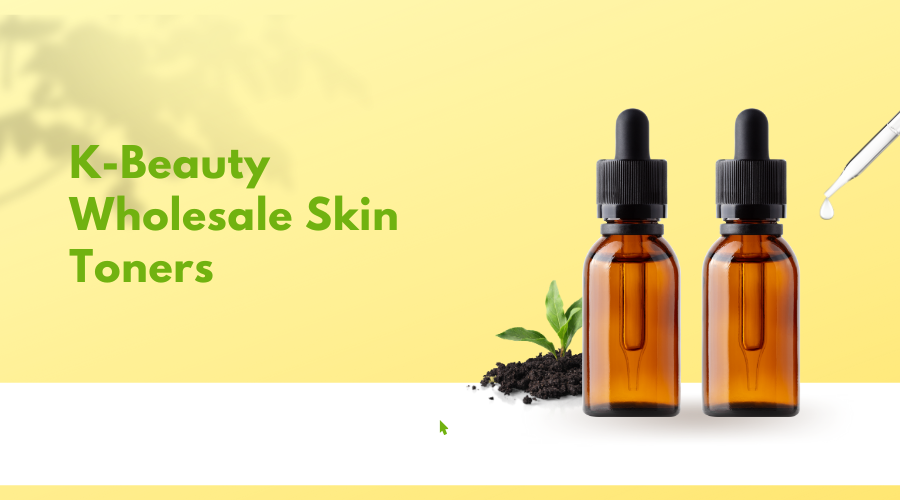Best Cleansing Foams for Acne-Prone Skin: A Complete Guide
- healthybeautykr
- Feb 17
- 3 min read

Acne-prone skin requires gentle yet effective cleansing to remove dirt, oil, and bacteria without stripping moisture or causing irritation. One of the best ways to maintain clear skin is by using a high-quality cleansing foam that is specifically formulated to fight acne. But with so many options available, how do you choose the right one? This guide will help you understand what to look for in a cleansing foam and recommend the best products for acne-prone skin.
Why Cleansing Foam is Essential for Acne-Prone Skin
Cleansing foam plays a crucial role in controlling excess oil, removing impurities, and preventing clogged pores, which are common causes of acne. Unlike harsh soaps or traditional cleansers, a well-formulated cleansing foam:
Deep cleanses without over-drying
Reduces inflammation and redness
Helps unclog pores and prevent breakouts
Maintains the skin’s pH balance
What to Look for in a Cleansing Foam for Acne-Prone Skin
When choosing a cleansing foam, look for the following ingredients and features:
1. Salicylic Acid
A powerful BHA (beta hydroxy acid) that helps unclog pores, remove dead skin cells, and reduce acne breakouts.
2. Tea Tree Oil
A natural antibacterial and anti-inflammatory ingredient that helps fight acne-causing bacteria.
3. Niacinamide
A form of vitamin B3 that helps reduce redness, inflammation, and control sebum production.
4. Benzoyl Peroxide
A well-known acne-fighting ingredient that kills bacteria and reduces excess oil production.
5. Aloe Vera & Centella Asiatica
These ingredients help soothe irritated skin, reduce redness, and promote healing.
6. Non-Comedogenic Formula
Ensure the cleanser is non-comedogenic, meaning it won’t clog your pores or cause breakouts.
Top 5 Best Cleansing Foams for Acne-Prone Skin
1. Healthy Beauty Purifying Foaming Gel
Contains zinc PCA to control oil
Soap-free and pH balanced
Reduces acne without drying out the skin
2. CeraVe Foaming Facial Cleanser
Enriched with ceramides and niacinamide
Helps restore the skin barrier
Removes dirt and oil while keeping skin hydrated
3. COSRX Low pH Good Morning Gel Cleanser
Mild formula with tea tree oil
Balances the skin’s pH level
Helps prevent breakouts without irritation
4. Neutrogena Oil-Free Acne Wash
Contains 2% salicylic acid for deep cleansing
Fights acne and prevents future breakouts
Ideal for oily and acne-prone skin
5. Innisfree Jeju Volcanic Pore Cleansing Foam
Infused with volcanic clay to absorb excess oil
Deeply cleanses pores
Prevents blackheads and breakouts
How to Use Cleansing Foam for Maximum Effectiveness
Step 1: Start with Clean Hands
Always wash your hands before touching your face to prevent bacteria transfer.
Step 2: Wet Your Face with Lukewarm Water
Avoid hot water, as it can strip your skin of natural oils.
Step 3: Apply a Small Amount of Cleansing Foam
Gently massage the cleanser in circular motions for about 30–60 seconds.
Step 4: Rinse Thoroughly
Make sure to wash off all the foam to prevent residue buildup.
Step 5: Follow Up with a Toner and Moisturizer
To lock in hydration and further treat acne, apply a lightweight toner and a non-comedogenic moisturizer.
Common Mistakes to Avoid When Using Cleansing Foam
1. Over-Washing Your Face
Washing more than twice a day can strip your skin of essential moisture, causing it to produce more oil and worsen acne.
2. Using Harsh or Alcohol-Based Cleansers
Avoid cleansers with harsh sulfates and alcohol, as they can irritate and dry out your skin.
3. Not Rinsing Properly
Leaving any residue on your skin can lead to clogged pores and breakouts.
4. Skipping Moisturizer
Even if you have oily skin, hydration is key to maintaining a healthy skin barrier. Always follow up with a lightweight, oil-free moisturizer.
FAQs About Cleansing Foam for Acne-Prone Skin
1. Can I use cleansing foam every day?
Yes, but limit it to twice a day (morning and night) to prevent over-drying.
2. Is foaming cleanser better than gel cleanser for acne?
Foaming cleansers are better for oily and acne-prone skin as they help remove excess sebum. However, gel cleansers are gentler and can be better for sensitive skin.
3. How long does it take to see results?
It typically takes 2-4 weeks to see improvements, depending on your skincare routine and consistency.
4. Should I use a different cleanser if I have sensitive acne-prone skin?
Yes, choose a gentle, fragrance-free cleansing foam that contains soothing ingredients like aloe vera or Centella Asiatica.
Conclusion
Finding the right cleansing foam for acne-prone skin is essential for maintaining a clear and healthy complexion. Look for effective ingredients like salicylic acid, tea tree oil, and niacinamide, and avoid harsh chemicals that can strip your skin. By following the correct cleansing routine and avoiding common mistakes, you can significantly reduce breakouts and achieve a balanced, refreshed complexion. Ready to upgrade your skincare routine? Choose a cleansing foam that suits your skin type and start seeing the difference today!



Comments